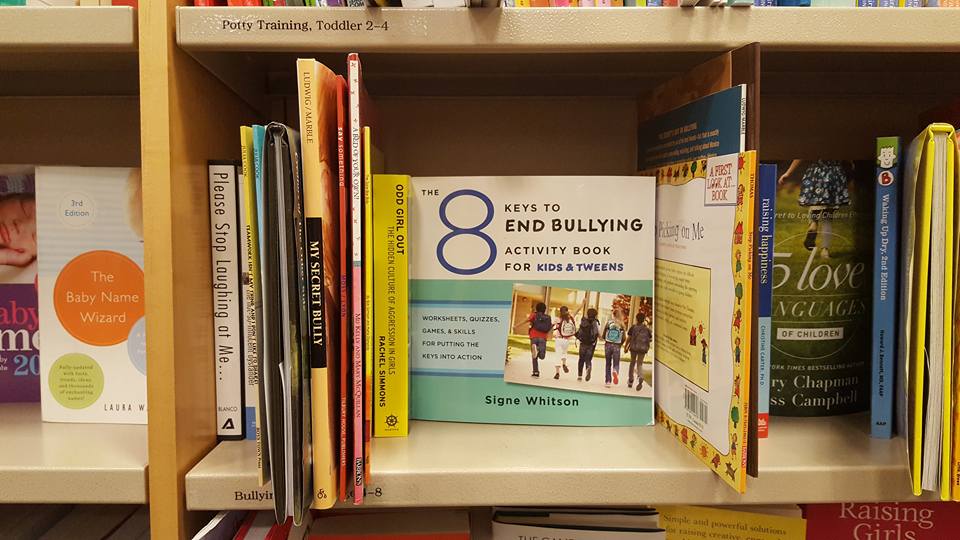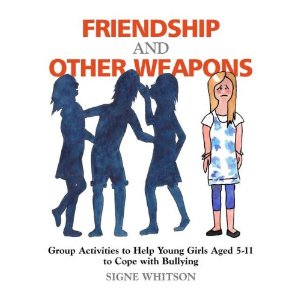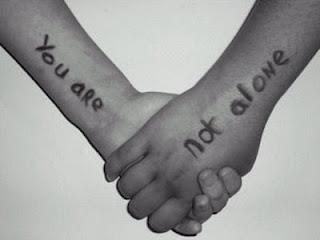Posts tagged bully
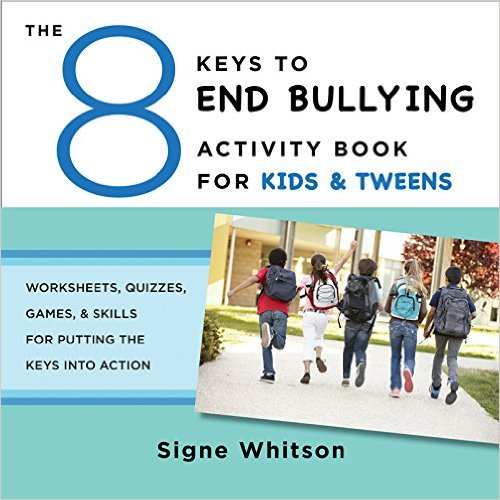
Back to School Prep for Coping with Bullying
0Looking for ideas to help prepare your child, tween, or teen to successfully navigate challenging peer dynamics, conflict, and bullying? Check out what readers–including this School Psychologist and Mom of 3–are saying about the 8 Keys to End Bullying Activity Book:
5.0 out of 5 stars Excellent Resource
By: Amazon Customeron August 18, 2017
Format: Paperback
I LOVE this book! As a school psychologist and mother of 3, ages 11-16, this is an incredible resource. The book is divided into 8 “Keys” in order to learn what bullying behavior looks like, how to deal with it, and how to be an advocate to end it. There are realistic examples with opportunities for kids to process how they would handle each situation, in addition to answer keys and clear cut phrases/actions that kids could use if put into similar situations. I particularly loved that the author included a chapter on how our brains work in stress situations, using simple enough language for young ones to understand the difference between the limbic system (which controls our emotional response) and pre-frontal cortex (our thinking brain). I highly recommend this book to educators and parents of kids and tweens in order to help their children learn healthy ways to navigate their social worlds.
Order your copy here: https://www.amazon.com/Keys-Bullying-Activity-Book-Tweens/dp/0393711803/ref=sr_1_2?ie=UTF8&qid=1503153527&sr=8-2&keywords=8+keys+to+end+bullying
Bigger Than The Playground: Dealing With Cyberbullies After The Big Move (Guest Post)
0Today, I share a Guest Post from Laura Pearson, a Mom who writes about her experiences supporting her son after the family’s move to a new town:
Moving to a new town and attending a new school can be one of the hardest things your child will experience before entering adulthood. They will have to leave all of their friends, teachers and familiar places behind before completely readjusting to something new.
An article published by Psychology Today claims that children who have recently moved can exhibit poor performance in school, bad behavior, drug abuse, and many other maladies. On top of all of that, things like cyberbullying the “new kid” can be rampant.
According to the Cyberbullying Research Center, nearly 28 percent of middle schoolers and high schoolers experienced cyberbullying between May of 2007 and August of 2016. PBS reports that nearly 1 in 3 kids say they’ve experienced cyberbullying.
But what exactly is cyberbullying, anyway?
According to the National Crime Prevention Council (NCPC), cyber bullying is similar to other types of bullying, except that it takes place online over emails and text messages. Some examples of cyberbullying include: sending someone mean or threatening emails, instant messages or text messages; tricking someone into revealing personal information and sending it to others; and creating a website to make fun of another person. Unlike in-person bullying, cyberbullying can take place 24 hours a day, even when your child is alone.
A 2015 article by Scientific American confirmed a direct correlation between cyberbullying and an increased likelihood of depression among children. There have even been instances in the news where a child was cyber bullied to such an extent that they took their own lives.
So what can we do to help our child if they are being cyber bullied?
For parents, it is important to know what sites your child is visiting and to understand who they are interacting with. According to stopbullying.gov, this is the first step for parents to take in order to prevent cyberbullying before it starts. Establishing rules with your children about what sites they visit and what activities they engage in can help eliminate potentially harmful conditions.
The best thing for your child to do if they are being cyber bullied is to not respond to the attacks of a cyber bully and to block them using the privacy features of your E-Mail or messaging. Any response to the bully from your child can be easily circulated and prolong the confrontation. Be sure to save all bullying emails and texts, and send them to your Internet Service Provider (ISP). Remember that bullying and cyberbullying can be a crime if they are threatened with violence or harassed based on their gender or race. Although technology provides another avenue for children to be bullied, it also provides accurate records and features that can yield an effective defense against it, legally or otherwise.
It is also beneficial to create a stress-free home environment for your child if they are experiencing cyber bullying, especially after moving to a new place. Start off by creating stability in your new home that your child can come to rely on, such as a weekly game nights or pizza every Friday. Try to de-clutter your home environment and make it organized so that your child knows where everything is if they need it. It is also helpful to foster clear and loving communication with your child in your home so that they know they have a safe haven from any sort of bullying or negativity, and so that they can share with you when something is wrong. In many instances, children will feel embarrassed and not want to share the fact that they are being bullied.
By being aware of your child’s online activity and having open communication about what to do if they are being bullied online, parents can help their children thrive after moving to a new town or city.
For more information, please visit Laura Pearson at Edutude.net or email her: laura@edutude.net
New Reviews are In for the 8 Keys to End Bullying Activity Book
0
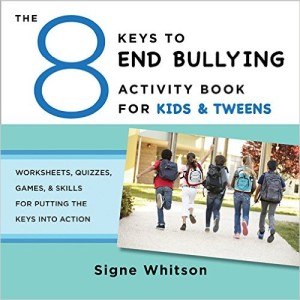 “A needed topic in a great format. It is an Activity Book and more! The author uses a variety of methods to communicate her key points. Drawing for the artist, writing for the wordsmith, up and at ’em for the active learner. Each key has a checkpoint (post test) to determine comprehension. The stories use culturally relevant names and situations which I find helpful working with the population I do. I especially like Key 6,Be Known For Being Kind, which give 10 things to say and do to stop bullying. New ideas allow for independent thinking and actions and it doesn’t even list “tell an adult” which most kids say doesn’t work. Thanks, Ms. Whitson for a great resource.”
“A needed topic in a great format. It is an Activity Book and more! The author uses a variety of methods to communicate her key points. Drawing for the artist, writing for the wordsmith, up and at ’em for the active learner. Each key has a checkpoint (post test) to determine comprehension. The stories use culturally relevant names and situations which I find helpful working with the population I do. I especially like Key 6,Be Known For Being Kind, which give 10 things to say and do to stop bullying. New ideas allow for independent thinking and actions and it doesn’t even list “tell an adult” which most kids say doesn’t work. Thanks, Ms. Whitson for a great resource.”
The activities are fun to do and I couldn’t wait to see what was coming next. After I completed the 8 Keys I really wanted to get rid of bullying at my school. I learned what bullying is and things I can do to stop it.” (Ashlyn, age 11)
“Signe Whitson continues to be one of the most dynamic leaders in bullying education and crisis intervention among youth. These interactive guides for students, parents, and educators provide the hands-on tools to help kids and tweens cope wisely with real-life situations, both offline and online. These workbooks are full of engaging and collaborative games, worksheets, and thought-provoking activities that will stay with your child longer than simply reading a book. Whitson’s activity program allows you to get involved with your child on both an emotional level and an educational one―these are definitely two books you must reach out and buy.” (Sue Scheff, Parent Advocate, Internet Safety Expert and author of Shame Nation)
“Well-organized and easily relatable, this workbook and companion guide will help kids understand categories of aggressive behaviors―such as how rude, mean, and bullying behaviors differ―and teach them to treat others with respect and kindness. Bravo for a fun, accessible anti-bullying activity program!” (Carrie Goldman, award-winning author of Bullied: What Every Parent, Teacher, and Kid Needs to Know About Ending the Cycle of Fear)
“Signe Whitson continues to provide value that very few do: a detailed approach that offers tools and skill-building for young people in an action-based training format. This is the only way to impact one of our toughest issues that all people face: bullying. An amazing resource for educators and parents, with proven strategies to fight bullying situations.” (Jason Spector, Veteran Physical Educator and Coach, Co-Founder of Sweethearts and Heroes Anti-Bullying Program, father of two)
Thanks, all, for your kind words and great feedback! If you have not uploaded our review yet, please do so at https://www.amazon.com/Keys-Bullying-Activity-Book-Tweens/dp/0393711803/ref=pd_bxgy_14_img_2?_encoding=UTF8&pd_rd_i=0393711803&pd_rd_r=ZNTF9NXEC95WBS47H7CM&pd_rd_w=x1GW6&pd_rd_wg=jFlBe&psc=1&refRID=ZNTF9NXEC95WBS47H7CM
Activity Book Provides 40+ Hands-On Skills to Stop Bullying
0I was just at a Barnes & Noble fundraiser for my kids’ school and found my new book featured on this shelf! Just as exciting to my fan-girl self is that my book is right next to Rachel Simmons’ groundbreaking, Odd Girl Out, and the books of my favorite children’s author, Trudy Ludwig.
All make for great holiday gifts, in case you still have teachers, counselors, parents, or kiddos on your list!! Order on amazon now at https://www.amazon.com/Keys-Bullying-Activity-Book-Tweens/dp/0393711803/ref=sr_1_1?ie=UTF8&qid=1482326002&sr=8-1&keywords=8+keys+to+end+bullying+activity+book
The Most Important Thing About Bullying–in 7 Words or Less
0While I soak in as much Summer as I can before the 2016-17 school year begins, I am thinking about my own mantras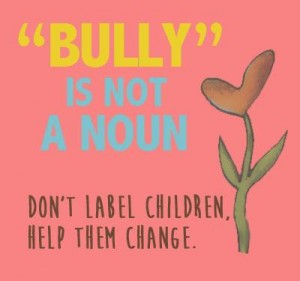 of School Counseling—the most important things I can offer my students to make them each feel heard, understood, safe, and valued. What follows are my Bullying Prevention mantras (along with their slightly longer explanations.)
of School Counseling—the most important things I can offer my students to make them each feel heard, understood, safe, and valued. What follows are my Bullying Prevention mantras (along with their slightly longer explanations.)
In One Word: EMPATHIZE
Bullying is a purposeful act of cruelty. Kids who bully show a lack empathy for the feelings and experiences of their targets. Parents and professionals play a key role in cultivating empathy in all kids, especially those who are most likely to get caught up in moments of social whack-a-mole, knocking others down just to pull themselves up the school social ladder.
In Two Words: WORDS MATTER
Okay, I already previewed this one, didn’t I? At my elementary school, many of the students call me Queen Signe. Some of them do it because they like to be silly and others do it just for fun but most of the kiddos I work with use this term because our comprehensive, Every Action/Every Day Bullying Prevention strategy means that we are always talking about the fact that words matter. The way we speak to each other, including the names we use and the words we choose, all have a huge impact on how we feel about ourselves and how we enjoy our time at school.
Important point: The same applies to how we communicate through technology. Teach kids that the words they text, tweet, send, and post should be used with the same amount of care as the words that they say to someone in person.
For the rest of my mantras, please check out my article on Psychology Today:
School Administrator Reviews Friendship & Other Weapons
0Many thanks to Michael McKnight from New Jersey for this feedback on Friendship & Other Weapons:
“As a long time school administrator this is an exceptional resource to add to any prevention program and is tailored to girls. Often we neglect this group and the activities and resources in this book are an excellent addition to any bully prevention program!”
(Get your copy today at http://www.amazon.com/Friendship-Other-Weapons-Activities-Bullying/product-reviews/184905875X/ref=cm_cr_dp_synop?ie=UTF8&showViewpoints=0&sortBy=bySubmissionDateDescending#R2TCI7531ZY40P)
Bystander Interventions: The Power of the Peer Group in Stopping Bullying
0Research suggests that peers are present during nine out of every 10 incidents of bullying but intervene on behalf of victims less than 20% of the time (Hawkins, Pepler & Craig, 2001). The same study documents that when peers do step in to stop bullying behaviors, however, the episode stops within 10 seconds, more than half of the time. This holds true regardless of the specific words the bystander uses. In other words, it’s not how a young person intervenes so much as simply the fact that he does intervene, that brings about the desired change (Goldman, 2012).
Educating kids that their voice can make a difference is an empowering message with implications far beyond bullying prevention! What a gift for a young person to know that their words truly matter.
In 8 Keys to End Bullying: Strategies for Parents & Schools, I point out that in school settings, kids with high social status often make the best interveners in bullying situations because of their outsized influence on the peer group and their relative immunity from the backlash of vengeful aggressors. Their expressed disapproval of an episode of unwanted aggression sends a strong and powerful message that bullying is not cool. The news clip below is the perfect example of how a SIMPLE, SPONTANEOUS intervention by members of an 8th grade basketball team made a huge difference for a young person who was on the receiving end of cruel, public taunting…and how their spot-on words impacted their entire school community.
BE KNOWN FOR BEING KIND!
9 Ways Parents Can Support Kids After Bullying and Social Exclusion
0In their younger years, they were inseparable. They begged for playdates, planned out sleepovers, coordinated afterschool activities, and just seemed to find genuine joy in each other’s company. It was a match made in heaven, you observed, and you felt so lucky that your child had found such a positive friendship so early on in life.
Then, things changed. Seemingly overnight. One day, you are cajoling your tween to take a break from her 3-hour texting marathon with her bestie, and the next you notice that her cell phone suddenly sounds like radio silence.
Your daughter is devastated by this abrupt cut-off. You watch as she desperately tries to figure out why her friend has stopped responding to texts and how come none of the kids at her lunch table will talk to her anymore. But she can’t seem to glean any understanding of the cause. She only knows with certainty that nothing is the same.
What can you do for your child when he or she is on the receiving end of a sudden deep freeze from former friends? Read on for 9 strategies parents can use to support their children after bullying and social exclusion:
When Kids Make Mistakes Online: A Story of Social Media Frenemies
0During the elementary school years, most kids are very aware of technology but still quite naïve about all of the hurtful ways in which it can be used. Well into their adolescence even, many kids remain oblivious to the legal consequences of their online actions. This real-life example of innocence-gone-awry by way of technology underscores that one of the most important things adults can do to bring an end to cyberbullying is to teach young kids about the risks of their online behavior and to give them skills to protect themselves from lasting harm.
For the full article, please click here or paste this link into your browser: http://www.huffingtonpost.com/signe-whitson/what-happens-when-kids-ma_b_5953026.html
Using 8 Keys to End Bullying in a School Setting
0
This week, as part of a graduate course assignment following the completion of my 2-day Managing Conflict in Schools course, an Education professional submitted this personal reflection paper on how the concepts from 8 Keys to End Bullying: Strategies for Parents & Schools can be applied in his work setting. The student was kind enough to agree to allow me to share his writing with you:
Personal Reflection – 8 Keys to End Bullying: Strategies for Parents & Schools (2014)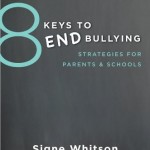
Blair Raugust
Augustana College
June 2014
Bullying. An issue that gains constant attention in society, the media, and most importantly for myself; schools. I have been in the education field for the past four years and over this time have witnessed accounts of bullying within the school environment. I wish that I could say that my undergraduate degree properly equipped me with the skills and tools that I would need to effectively intervene; however, in my experience I feel it was left out of my university education. It is a terrible feeling as a teacher when you witness bullying in your school, or know that it is happening, and you are not confident in your abilities to effectively address the situation. I was thrilled when I was able to attend a two day seminar in Victoria B.C. hosted by Signe Whitson titled: Managing Conflict in Schools: Practical Strategies to Stop Bullying and Help Kids Handle Anger Effectively. I found the two day course provided practical, effective solutions that I would be able to incorporate into my teaching when I returned to work on the following Monday. Furthermore, I was provided with a copy of a book written by Whitson titled: 8 Keys to End Bullying: Strategies for Parents and Schools (2014). This paper is a personal reflection on the book with the focus being on specific strategies and applications that I found useful and how I plan to use them in my class room and school.
I recently obtained a graduate degree in Education Leadership and School Improvement from the University of Alberta. A theme throughout the two year program was the necessity of establishing positive relationships with teachers, parents, administrators, and students. The importance of relationships was also highlighted by Whitson as an instrumental contributor to effectively end bullying. I found the three points that Whitson gave on why strong relationships with teachers are important to have a great impact on me. Whitson’s three points are: 1) Kids who bully act without the hindrance of disapproval by a grown-up that matters to them, 2) Kids who are victimized feel isolated from sources of support and intervention, 3) Kids who witness bullying have no one to turn to and report what they have seen. I feel that these connections are even more important when Whitson reports that bullying most often happens when no teachers or adults are present. I believe that students need to know that there are adults around them that will provide support. I found it refreshing when Whitson pointed out that sometimes the solutions that adults provide don’t need to be groundbreaking. We may not always have the answers or be able to rectify a situation immediately. Often a simple comment such as, “I am really sorry that this is happening to you” can provide some much needed relief to students. Whitson makes it clear that, “Teachers play a pivotal role in a schools effort’s to bring an end to bullying” (p. 55). School leaders and educators cannot hold the opinion that addressing bullying is not part of my job description or use the excuse, “if it did not happen in my class, it is not my problem”.
In the book Whitson argues that in order to stop bullying students need to be taught how to properly respond to it. Prior to reading the book, my first reaction when I witnessed a student being bullied was to discipline the child who was bullying; however I quickly learned this was the wrong approach. Whitson acknowledges in the introduction to Key 5, that a common approach among adults is to directly punish the aggressor. Davis and Nixon (2010) found that adult actions aimed at changing the behavior if children who bully are actually more likely to make things worse for their victims – not better (as cited in Whitson, 2013). Whitson urges teachers to help students develop important social and emotional competencies. Whitson points out the effective social and emotional learning (SEL) programming, “Drives important social outcomes such as positive peer relationships, higher levels of caring and empathy, increased social engagement, and reduction in problem behaviors such as bullying” (p. 97). Whitson proposes five components of a bully prevention SEL program: 1) Emotional Management – learning to manage strong feelings in constructive ways, 2) Empathy – the ability to understand how another person is feeling in a particular situation, 3) Problem solving and Conflict Resolution – teach students how to manage life’s inevitable conflicts in independent and respectful ways. 4) Assertiveness – being able to communicate in a verbal, non-blaming, respectful way, 5) Friendship building – being able to establish and maintain positive friendships. I found this section to be very important for teachers to realize and as Whitson points out, it’s important to teach these skills in the early years of formal schooling. Although teaching SEL is not part of the curriculum, I feel it is part of our duty to help young people develop these skills before they enter adult life. “Integrating SEL into the standard school curricula, from the earliest years through high school graduation, is a proven way to fortify kids with the skills they need to cope with bullying and to thrive in all of their interpersonal interactions (p. 120).
I mentioned earlier that I was appreciative of the “ready to use” strategies that are include through the book. Whitson includes specific activities that teachers can use with their students to help them understand bullying. Often times when attending professional development opportunities and reading books on educating young people, I have found that there are great ideas for teachers but they often lack to practical application aspect; Whitson managed to affective address this issue throughout the book. Furthermore this book is not only indented to reach out to teachers but also is intended for: parents, administrators, youth workers, and counselors. There is sound advice and strategies for all people who are invested in improving the emotional well-being of children.
References
Whitson, S. (2014). 8 keys to end bullying: Strategies for parents & schools. New York, NY: W.W. Norton & Company, Inc.
